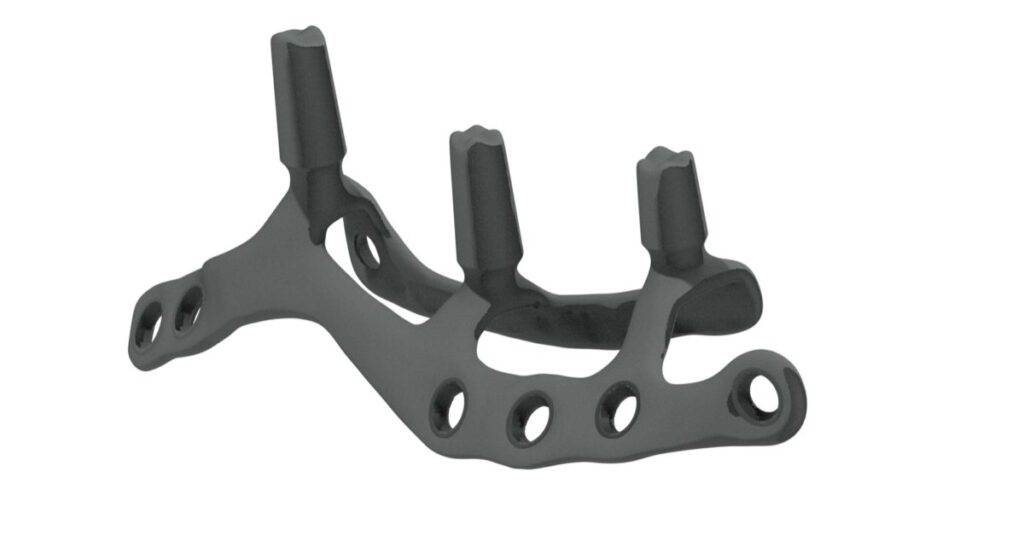IUXTA IMPLANTS
Juxta-osseous implants are completely customizable implant medical devices, as they are made through digital design and with subsequent laser melting printing, based on the specific needs of the patient.
They are placed subperiosteally, i.e. resting on the existing bone structure and then fixed with osteosynthesis screws.
The new digital design and production technologies make these implants a reliable and efficient solution in clinical cases presenting severe bone atrophy, when classic implantology cannot be used.

Advantages
- They avoid long regenerative procedures, which often have no real guarantee of success
- They offer a viable alternative to cases that would otherwise be difficult to treat
- They allow immediate loading and a lasting rehabilitation
- The use of osteosynthesis screws guarantees stability of the structure
- They are 100% customizable
- They are designed with an advanced software and are produced by laser melting titanium printing.

Monophasic abutments for cementation

Biphasic screw-retained abutments (MUA)

Cylindrical abutments with Morse cone coupling
WORKFLOW
- Data collection. The tomographic examination with the radiological template positioned in the patient’s mouth produces a file in DICOM format.
- Iuxta implant (subperiosteal) digital design. The design is digitally realized on software by superimposing the DICOM, STL Master and STL files of the radiological template model. At this stage are precisely defined the thicknesses and morphology of the implant, the shape and diameters of the holes for the osteosynthesis screws, the type of prosthetic abutment as well as the type of emergence profile.
- SLM printing. By Laser Melting sintering, thanks to the overlapping of titanium micro-powders.
- Processing and shipping. Finishing, quality control and packaging for shipment to the customer.
- Surgery. Everything is ready for surgery.

DO YOU WANT TO KNOW MORE?
CONTACT US!
Contact our experts in IUXTA surgery
EUROPE
CLINICAL CASES
Clinical Case IUXTA (Subperiosteal) implants
In this clinical case the patient presents a strong bilateral posterior mandibular atrophy that does not allow the insertion of traditional implants: it was therefore decided to proceed with a double rehabilitation with Iuxta implants.
The protocol involves the use of a surgical template to create the supporting implant holes, the implant is then fixed in situ with osteosynthesis screws. The defect between bone and implant is filled on the left side with bovine bone particles and DPRF membrane. The final suture includes mattress and single stitches.

